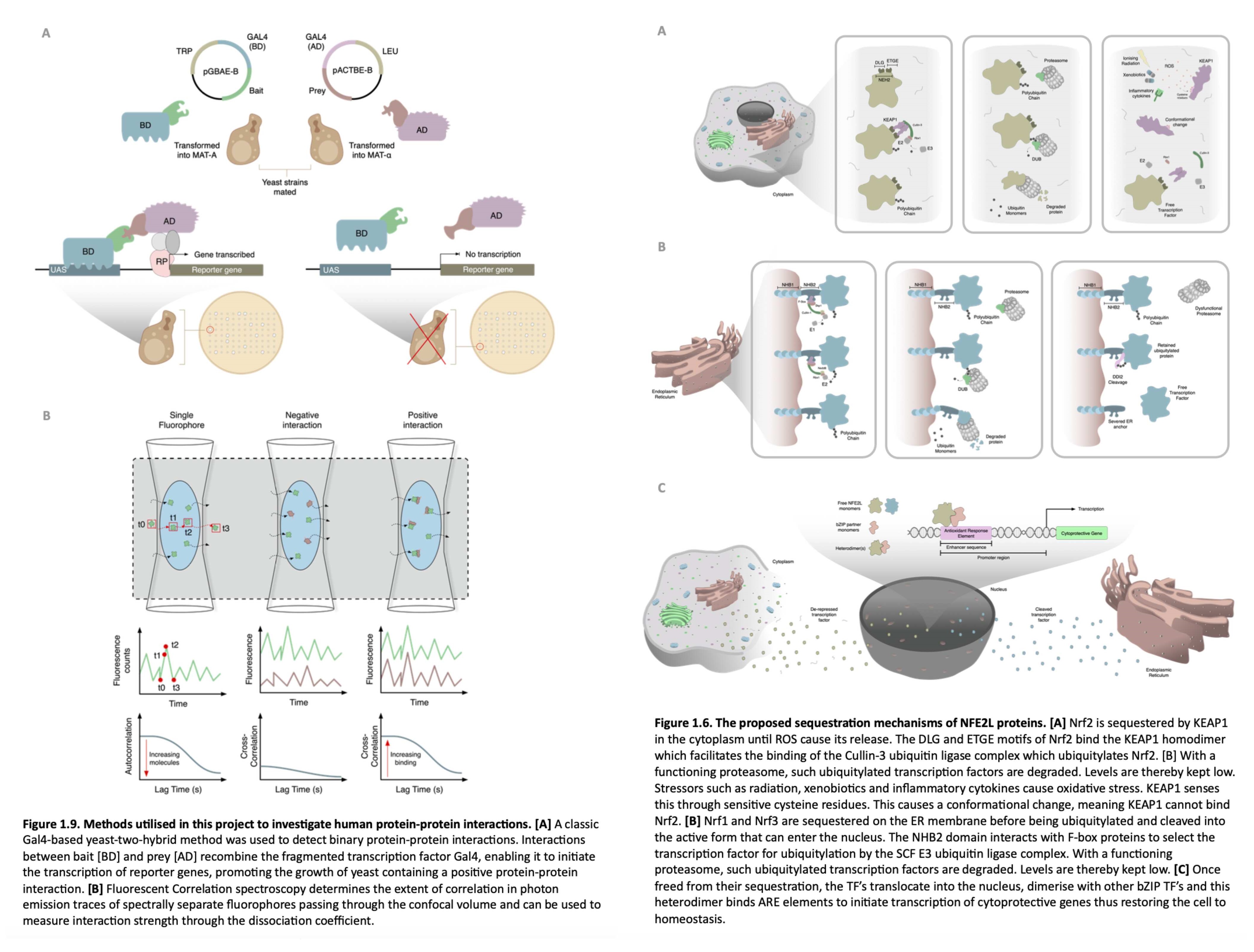Research

Protein-Protein Interaction Mapping
My PhD project titled 'Exploring the Comparative Networks of NFE2L Transcription Factors: Protein Interactions and Transcriptomic Insights' focussed on elucidating the binary protein-protein interaction network of Nrf1 - closely related to Nrf2, which is a transcription factor associated with poor prognosis in a number of cancers. The project briefly encompassed discovery of novel interactors using yeast-two-hybrid, followed by characterisation of their in vivo strength using the microscopy technique FCCS. Knock-out cell lines were also generated and investigated using RNA-seq to establish potential targets of Nrf1. This was compared to known transcriptomic targets of novel protein interaction partners, to map the possible functions and the combinatorial transcriptomic impact of these novel interactions.

Investigating Ras driven Cancers
I currently work with Professor Ian Prior and alongside Dr Yasmina Sahraoui on a project titled 'Development of a novel in vivo model enabling the study of all Ras variants'. This has involved creating an AAV library with the ability to induce mutations in K,N and HRas oncogenic hotspots using CRISPR/Cas9 technology. Cells exposed to AAV stably express Cas9 and a red fluorophore. The addition of a barcode within the AAV vector gives us the ability to not only measure the relative mutation frequency driven by AAV exposure, but also measure the impact of this mutation on growth through counting the amplification of each individual barcode sequence over a series of time points or throughout tissue.
Alongside this core project, I have designed a compound gene knock-out (KO) strategy utilising lentivirus. This relies on the expression of Cas9 in AAV exposed cells, and is identifiable through the stable integration of the an mNeonGreen fluorophore alongside the sgRNAs necessary for KO. Again, unique barcoding enables counting and tracking of KO iterations, following sorting of cells exhibiting both red and green fluorescence.
We aim to use this model to determine factors which may predispose certain mutations to cause tumours, or latterly to investigate the mutation specific effectiveness of novel cancer treatments. Use of the additional gene KO strategy will enhance our ability to study the relationships between Ras and other genes in cancer.